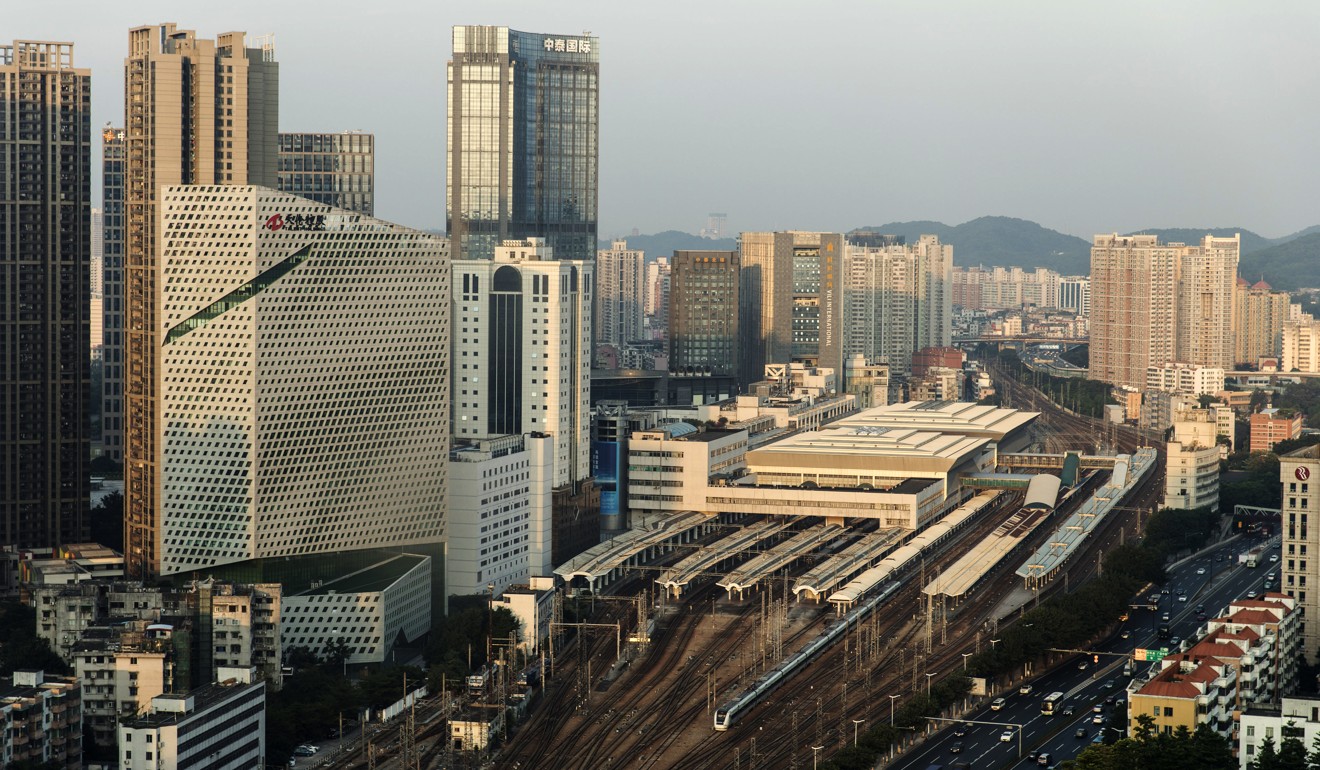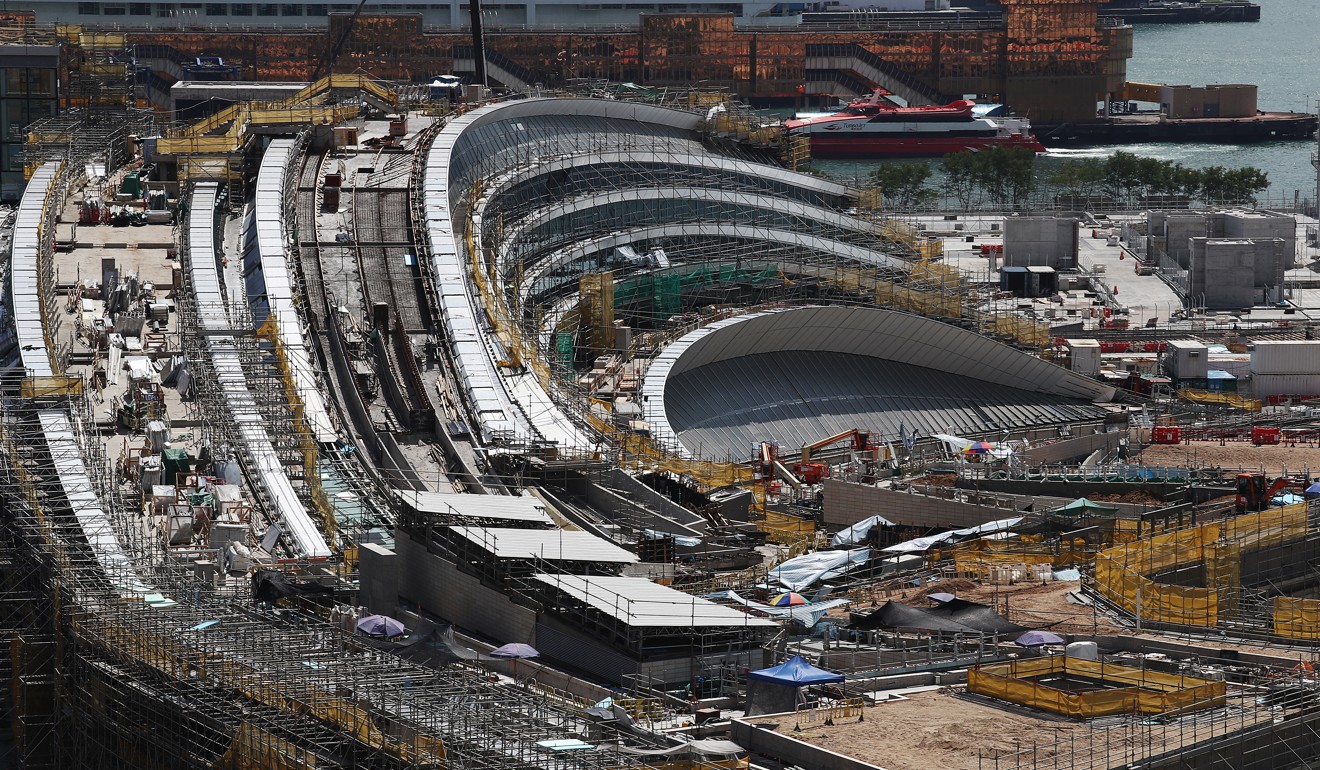Shenzhen had the largest economy in southern China’s Guangdong province last year after a new method of calculating gross domestic product saw it overtake local rival and provincial capital Guangzhou.
The
provincial statistics bureau said on Tuesday that it had revised up
Shenzhen’s GDP figure for 2016 to more than 2 trillion yuan (US$302
billion) from 1.95 trillion yuan in its initial report. The revision
meant that the city’s economy grew 9.1 per cent year on year.
Guangzhou’s GDP figure was also revised up, to
1.98 trillion yuan from 1.95 trillion yuan, but the increase was not
enough for it to hold on to the top spot.
The changes meant that the province’s total
economic output also rose – to 8 trillion yuan from 7.4 trillion yuan –
but no figure was given for the rate of growth.
The bureau said the changes reflected
the province’s decision to categorise research and development spending
as fixed investment rather than an operating expense.

Guo Wanda, vice-president of the Shenzhen-based
think tank China Development Institute, said: “It’s positive news for
Shenzhen but not a surprise because Shenzhen has been leading Chinese
cities in R&D spending.”
Shenzhen’s new ranking means it can challenge
for the leading role in the “Greater Bay Area” scheme, the central
government’s plan to link the cities of Hong Kong, Macau, Guangzhou,
Shenzhen, Zhuhai, Foshan, Zhongshan, Dongguan, Huizhou, Jiangmen and
Zhaoqing into an integrated economic and business hub. The authorities
in each of the cities are competing fiercely for the lead role and the
official policy breaks in land, talent and capital that would go with
it.
Shenzhen’s economy, however, is still smaller
than Hong Kong’s, which came in at US$320.91 billion last year. Chinese
media forecast earlier this year that Shenzhen would overtake Hong Kong
in 2016, but a weak yuan put paid to that ambition. Shenzhen has set an
economic growth target of about 8.5 per cent for this year.

Last year, the city invested more than 80
billion yuan in research and development, accounting for about 4.1 per
cent of its GDP, the highest ratio among mainland cities, according to
official data.
Since 2013, Shenzhen has allocated more than 4
per cent of its annual GDP to R&D, putting it on a par with South
Korea and Israel. By contrast, Hong Kong spends about 1 per cent of its
GDP on R&D each year.
“It’s very possible to see Shenzhen’s economic
size surpassing [that of] Hong Kong and Guangzhou as the Greater Bay
Area shifts from a manufacturing economy to a knowledge economy more
dependent on the often abstract products of innovation,” Guo said.
Ahead of Guangzhou’s Fortune forum that
is expected to bring a host of global business leaders to the city from
Wednesday, security checks at subway stations have been stepped up,
walls repainted and even paving stones dug up and replaced.
The guests will include Ford Motor’s executive
chairman Bill Ford, HSBC CEO Stuart Gulliver and leading tech
entrepreneurs, including Tencent chairman Pony Ma and Alibaba founder
Jack Ma. E-commerce giant Alibaba Group owns the South China Morning Post.
Local authorities hope the line-up of big-name
executives will help put Guangzhou on the radar of global investors,
especially Fortune 500 companies, at a time when China is struggling to
attract foreign direct investment.
Lin Jiang, a professor at Lingnan College, part
of Sun Yat-sen University, said local authorities were keen to make
Guangzhou a base for emerging industries and were exploring ways to
encourage giant global enterprises to invest. The aim, he said, was to
make the city a hub for international shipping, aviation, and scientific
and technological innovation.
Fixed direct investment in Guangdong in the
first half of 2017 rose 6.6 per cent year on year to US$12.31 billion,
according to official figures. The number of foreign-invested
enterprises granted approval to set up operations in the province in the
same period rose 46.4 per cent from the first half of last year to
5,239.
In Guangzhou alone, foreign investment in the
first nine months of this year rose by about 13 per cent from the
equivalent period of 2016 to US$5.63 billion.
“Guangzhou hopes to encourage FDI in
modern manufacturing and emerging industries, but it’s facing fierce
competition from nearby cities,” Lin said.
This article appeared in the South China Morning Post print edition as: shenzhen powers ahead of guangzhou

No comments:
Post a Comment